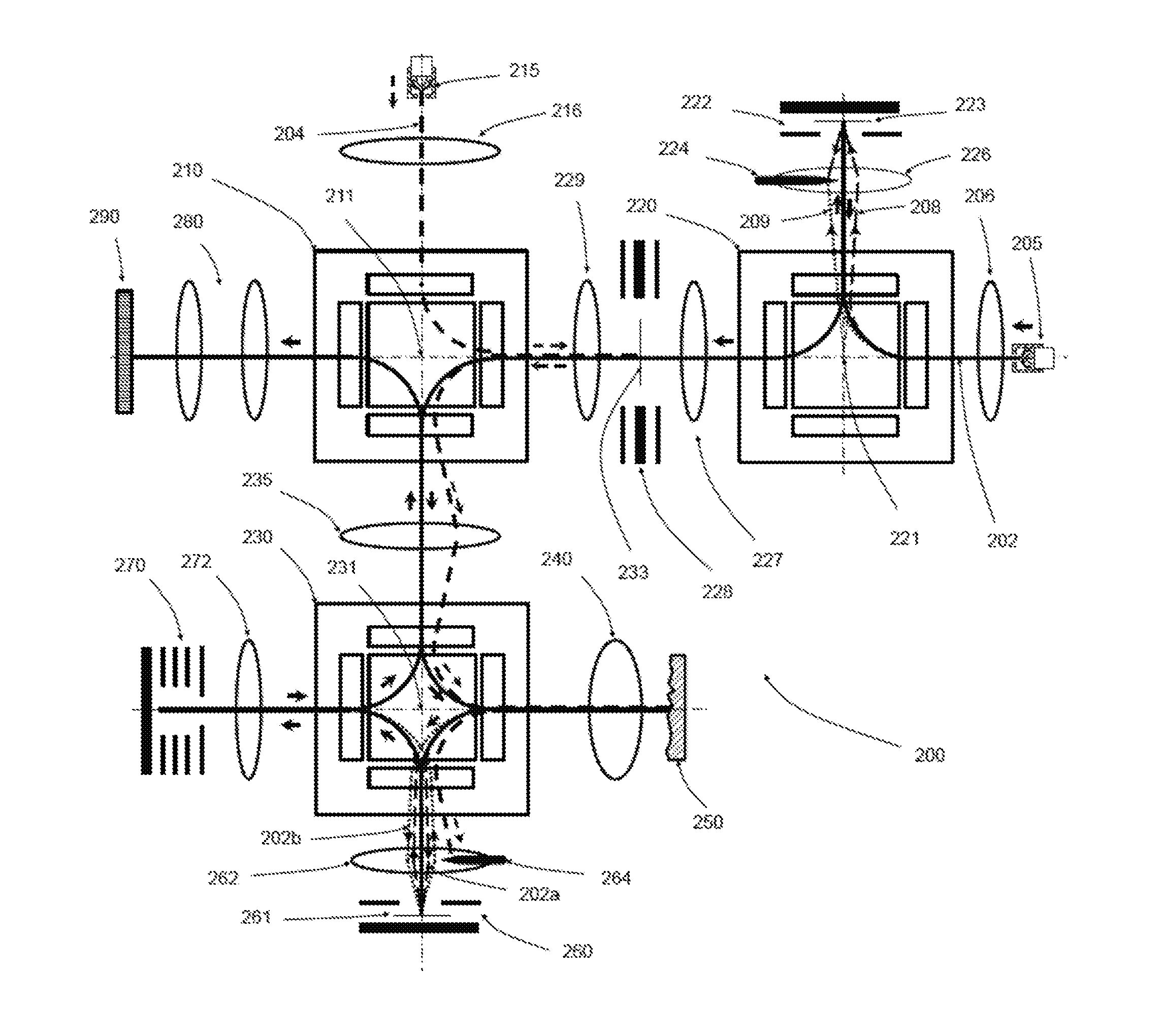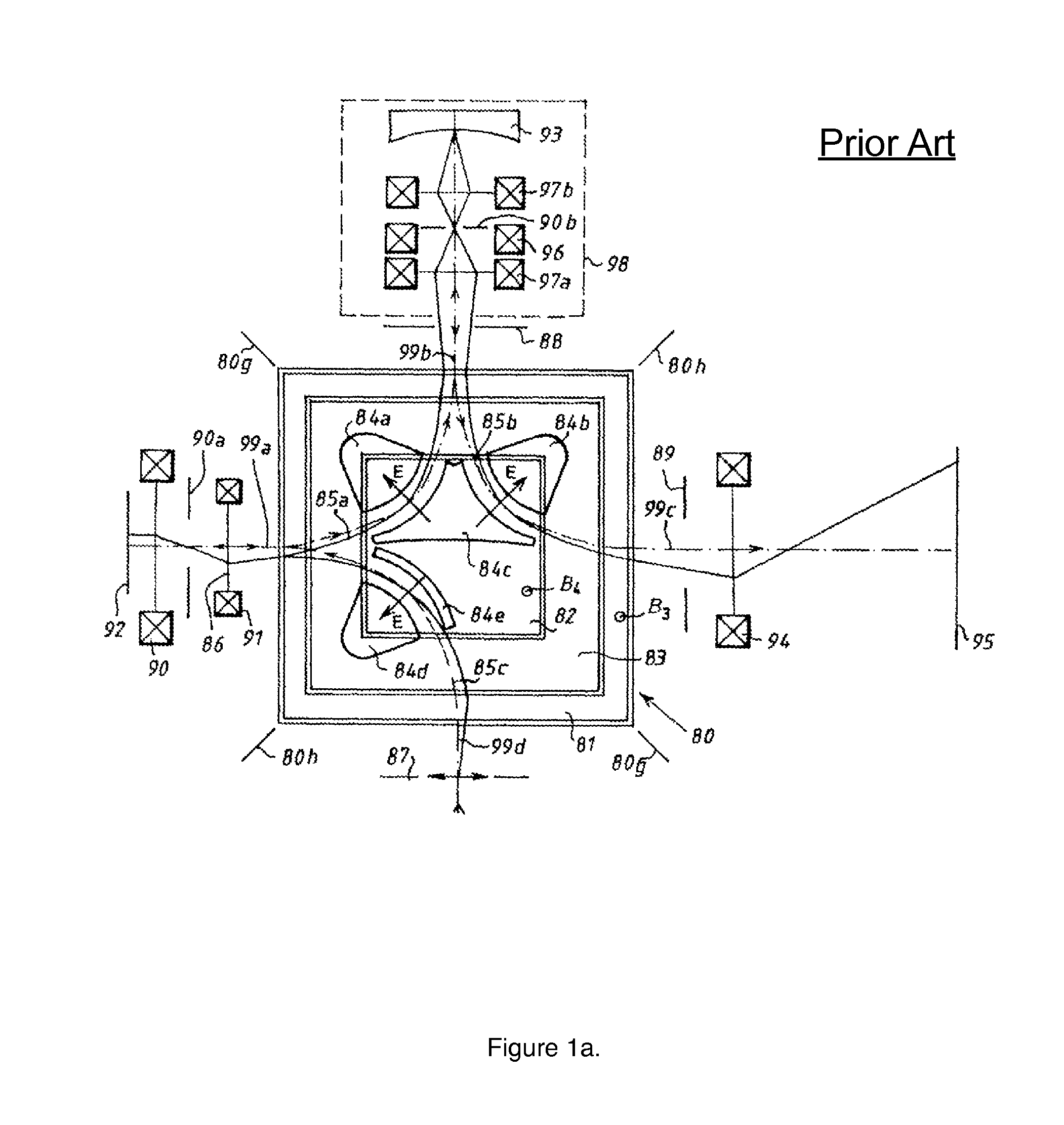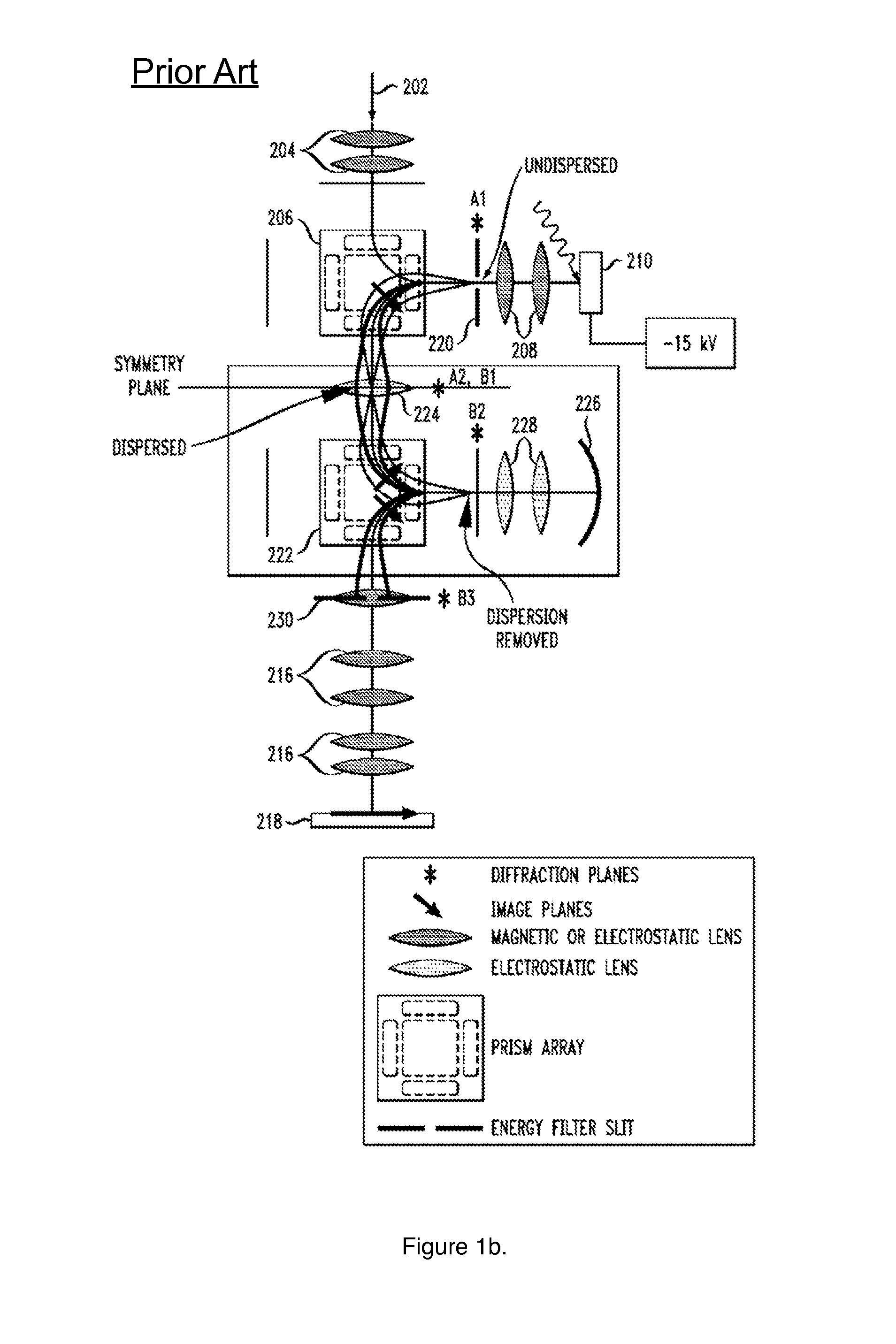Aberration-corrected and energy-filtered low energy electron microscope with monochromatic dual beam illumination
a dual-beam illumination, electron microscope technology, applied in the direction of magnetic discharge control, instruments, therapy, etc., can solve the problems of unavoidable damage to many types of specimens, lack of energy-filtered imaging, and lateral resolution of conventional leem/peem
- Summary
- Abstract
- Description
- Claims
- Application Information
AI Technical Summary
Benefits of technology
Problems solved by technology
Method used
Image
Examples
Embodiment Construction
An Aberration-Corrected, Energy-Filtered, Dual Beam LEEM / PEEM
[0042]While some of the above discussed prior apparatus and methods provide aberration correction and energy filtering, they do not allow for dual beam illumination. Other discussed prior apparatus and methods provide for dual beam illumination, however they do not allow for aberration correction, monochromatic illumination and energy filtered imaging. Improved apparatus and methods for providing aberration correction, energy filtering and dual beam illumination in a single LEEM / PEEM instrument are desirable. One distinct technique for providing aberration-corrected imaging, energy filtering and dual electron beam illumination with a monochromator in a single apparatus is disclosed herein and discussed below.
[0043]Unlike the prior technique of Rose et al. (FIG. 1a) employing a dispersion-free magnetic beam separator and an electron mirror for aberration correction, the presently disclosed apparatus and method does not requ...
PUM
| Property | Measurement | Unit |
|---|---|---|
| diameter | aaaaa | aaaaa |
| landing energy | aaaaa | aaaaa |
| deflection angles | aaaaa | aaaaa |
Abstract
Description
Claims
Application Information
 Login to View More
Login to View More - R&D
- Intellectual Property
- Life Sciences
- Materials
- Tech Scout
- Unparalleled Data Quality
- Higher Quality Content
- 60% Fewer Hallucinations
Browse by: Latest US Patents, China's latest patents, Technical Efficacy Thesaurus, Application Domain, Technology Topic, Popular Technical Reports.
© 2025 PatSnap. All rights reserved.Legal|Privacy policy|Modern Slavery Act Transparency Statement|Sitemap|About US| Contact US: help@patsnap.com



